Our 11 Best Education Articles in October: Students Are Moving Schools (and Skipping Class) in the Pandemic, Parents Are Voicing Concerns About Relief Funds & More
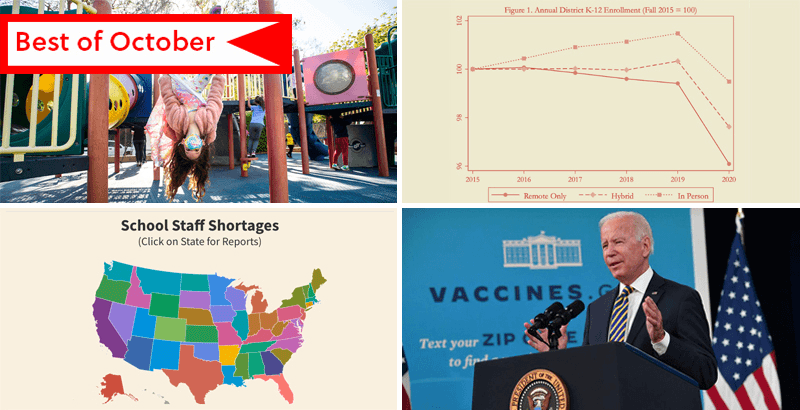
Help fund stories like this. Donate now!
October was the month we started to better understand how the 2020 pivot to remote instruction, and the subsequent fight to keep classrooms open amid COVID and the Delta variant, reshaped public school enrollment across the country. Also buried in this attendance conversation was a surprising trend: Even as campuses have reopened, an alarming number of students have been marked “chronically absent.” All of which raises concerns about extended COVID learning losses that will only compound this month’s findings from the nation’s report card — that student performance was declining at a historic pace even before the pandemic.
It was a busy month here at The 74, covering schools and students amid the crisis. Here were our 11 most shared and circulated reports:
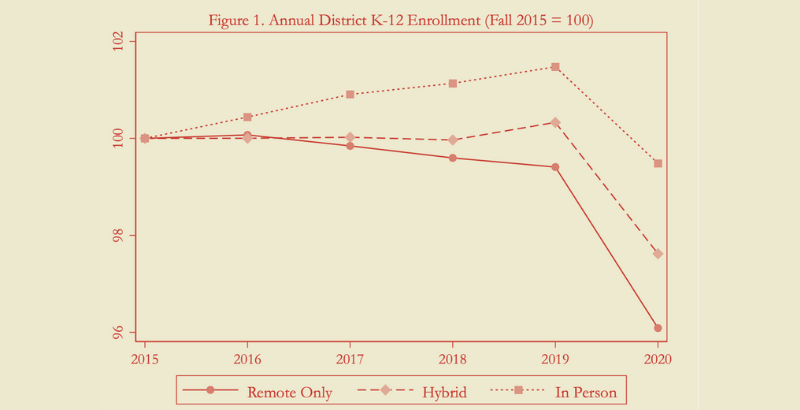
Kids Left Schools Last Year Because of the Switch to Remote Classes; Early Numbers Suggest They May Not Be Coming Back Soon
Enrollment: With the release of new data in recent months, a much clearer picture is emerging of how K-12 enrollment responded to the pandemic. First, a working paper released in August drew a direct line between the reopening choices districts made at the beginning of the 2020-21 school year and families’ education decisions, showing that hundreds of thousands of students left schools that offered remote-only instruction. The findings echo those of other publications, which have pointed to huge enrollment drops from traditional public schools — heavily concentrated in kindergarten and the earliest grades — alongside surges in homeschooling, private schooling and charters. What’s more, the early indicators from several districts suggest that enrollment isn’t bouncing back to the pre-pandemic status quo. Read Kevin Mahnken’s new report.

Gaggle Surveils Millions of Kids in the Name of Safety. Targeted Families Argue it’s ‘Not That Smart’
School Safety: After a bout of depression and a suicide attempt, Minneapolis student Teeth Logsdon-Wallace shared intimate details about his mental health in a class assignment last month. It was one of thousands of Minneapolis student communications that got flagged by Gaggle, a digital surveillance company hired by the district. The company contacted school officials even though Logsdon-Wallace was making the point that his mental health had improved — a detail seemingly lost in the transaction between Gaggle and the district. An earlier investigation by The 74 exposed how Gaggle, which saw rapid growth after the pandemic forced schools into remote learning, subjects students to relentless surveillance and raises significant privacy concerns. But technology experts and families with first-hand experience with Gaggle’s surveillance dragnet have raised a separate issue: The service is not only invasive, it may also be ineffective. “If it works, it could be extremely beneficial. But if it’s random, it’s completely useless,” said a 16-year-old Connecticut student mistakenly flagged for her work as a school literary journal editor. The 74’s Mark Keierleber digs in.

A New Kind of Curriculum Night: Armed With Protest Signs and Data, Diverse Group of Minneapolis Parents Demands Better Reading Instruction for Their Kids
Curriculum: Frustrated by years of rock-bottom literacy rates, an unlikely coalition of families has begun staging protests at Minneapolis Public Schools headquarters, hoping to push district leaders to acknowledge that the way the city’s schools teach reading runs counter to what science shows about how children learn. While there’s nothing new about angry parents raising their voices at school board meetings, what’s different about the situation in Minneapolis is that the protesters are armed with a trove of research, the district’s own data and an understanding of strategies that have made children proficient readers in other places. In this story, Beth Hawkins describes how families of color, National Parents Union organizers and affluent parents of struggling readers have joined forces to demand change. Read the full feature.
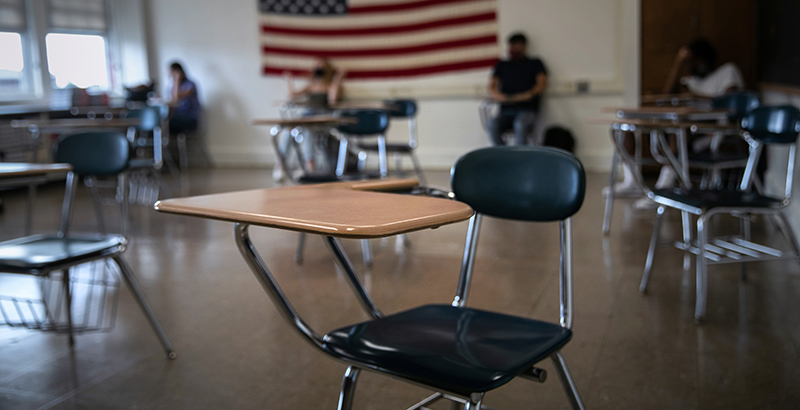
Exclusive Data: Absenteeism Surged Among English Learners During Pandemic
Chronic Absenteeism: Before COVID-19, Mia Miron almost never missed class. Her parents, who had immigrated from Mexico, instilled in her a belief in the value of education as the path to a better life. But when the pandemic hit, her absences began to pile up — sometimes because of a faulty laptop charger and sometimes because she was marked absent even when she had logged in. Her grades fell from B’s and C’s to D’s and F’s. “[School] was no longer our primary concern. We had to do anything to survive — to pay bills, rent, everything, before anything else,” Miron’s mother told The 74 through a translator. Across the country, the obstacles posed by remote learning appear to have triggered a disproportionate jump in absenteeism among English learners like Miron, new data indicate. The numbers, delivered to The 74 through public record requests, offer further insight into the devastating effects of the pandemic on the education of America’s 5 million English learners. Asher Lehrer-Small brings you the exclusive report.
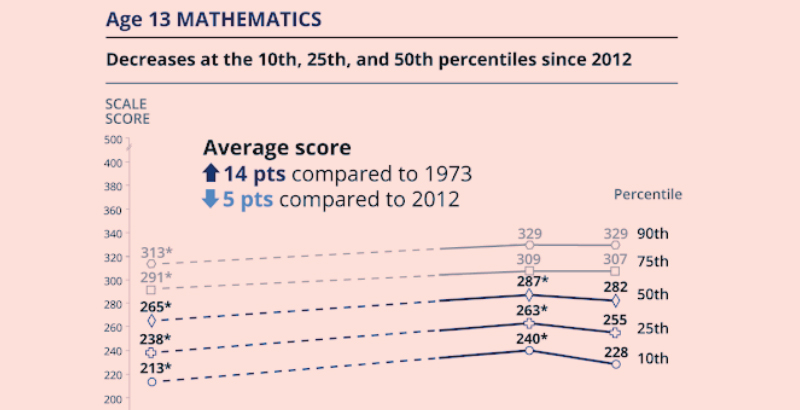
Long-Term NAEP Scores for 13-Year-Olds Drop for First Time Since Testing Began in 1970s — ‘A Matter for National Concern,’ Experts Say
Student Learning: Over the past few years, education observers have grown accustomed to downbeat news from the National Assessment of Educational Progress, with multiple rounds of the test pointing to largely stagnant scores across various subjects. The release this month of results from NAEP’s 2020 long-term trends assessment offers revelations that are startling as well as discouraging: For the first time in the half-century history of that test, reading and math scores for 13-year-olds significantly declined. Black and Hispanic students in that age group both lost ground in math since the test was last given, in 2012, and the lower performance of 9-year-old girls opened up a gender gap with boys that did not exist nine years ago. Worst of all were the plunging scores of low-performing students — especially those scoring at the 10th percentile, who declined an astonishing 12 points in eighth-grade math. “It’s really a matter for national concern, this high percentage of students who are not reaching even what I think we’d consider the lowest levels of proficiency,” said George Bohrnstedt, a senior vice president at the American Institutes for Research. Kevin Mahnken reports.
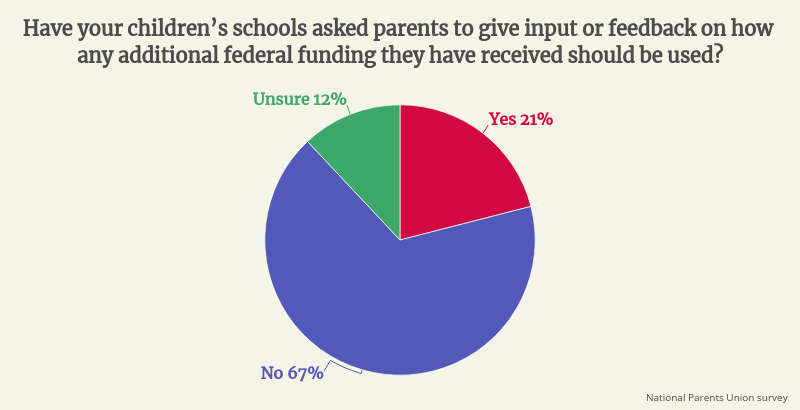
‘We Are Going to Hold You Accountable’: Just 1 in 5 Families Was Asked for Input into School Stimulus Fund Spending, New Poll Finds
School Funding: Despite a congressional mandate to draw on parents, students and a broad range of community and advocacy organizations as they draft plans for spending $122 billion in stimulus funds, states and school systems have failed to ask the vast majority of families what their priorities are, according to a new poll. Just 1 in 5 parents queried in a new National Parents Union survey said they were asked for their input by their schools as leaders make plans for spending an unprecedented infusion of recovery funds. Affluent households were more likely to report being consulted than low-income families, while half had heard little or nothing about the money. “Black and brown families throughout the pandemic have been more engaged than ever,” parents union President Keri Rodrigues tells Beth Hawkins. “To now turn your back on them and say, ‘We’ve got it from here’ really underestimates these families.”
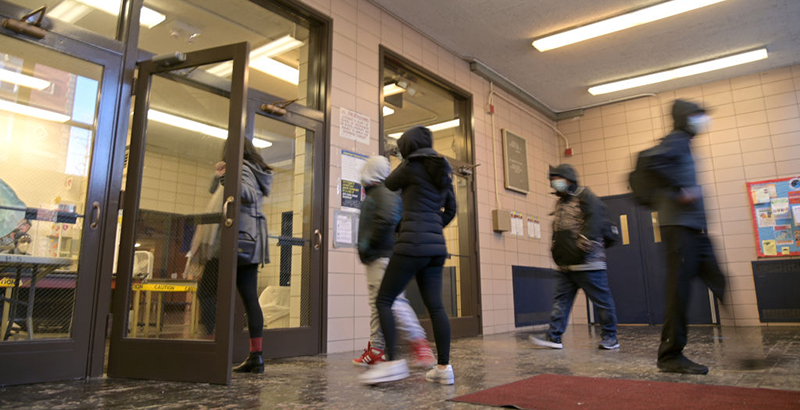
How Many Kids Are Attending NYC Schools? As America’s Top District Refuses to Disclose Numbers, Growing Concerns About a Mass Exodus
New York City: More than a month into the academic year, it’s still not clear how many students are attending school in the nation’s largest district. The New York City Department of Education has not yet released data on the number of young people enrolled in its roughly 1,600 schools, nor has it confirmed exactly how many show up each day. Officials say the DOE has the data on hand but is keeping the numbers under wraps amid fears that as many as 150,000 students have not yet set foot in a classroom this year. School officials say they will release the figures after the Oct. 31 deadline for reporting to the state. The nation’s second- and third-largest districts, Los Angeles and Chicago, have already reported drops of over 27,000 and 10,000 students, respectively, compared to last year. Asher Lehrer-Small has the story.
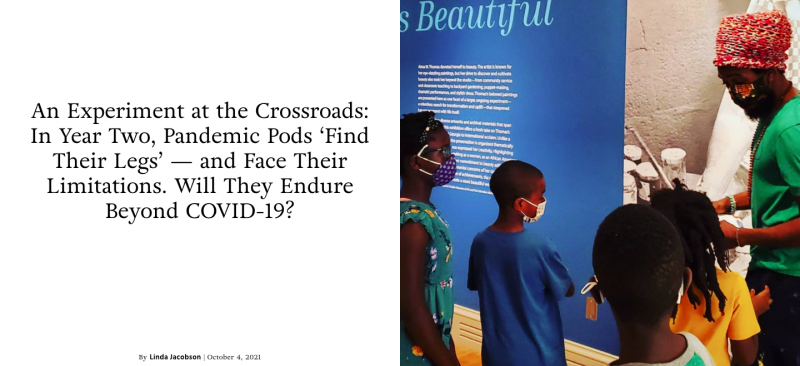
An Experiment at the Crossroads: In Year Two, Pandemic Pods ‘Find Their Legs’ — and Face Their Limitations. Will They Endure Beyond COVID-19?
Learning Pods: Wichita Public Schools lost roughly 2,400 students last year, including Megan Monsour’s two boys. They joined a nature-focused microschool, where they get one-on-one reading help and have no plans to return to the district. They are among 1.5 million students expected to be participating in pods this fall — a movement that started in response to school closures but has now expanded to accommodate families’ desires for culturally relevant education and frustration with their children’s public schools. One parent said she’s gone from “a place of extreme anxiety” over her decision to join a microschool “to a total place of liberation.” But as pods enter their second year, some organizers are recognizing their limitations and have started linking up with larger, established networks of homeschoolers for support. “Now that they have a year under their belt, they are starting to find their legs,” Kija Gray, a coach who advises mostly Black families in Detroit, told reporter Linda Jacobson. But some remain skeptical about pods’ staying power: “They’re not likely to scale substantially post-pandemic,” said FutureEd’s Thomas Toch. “Free public schools, we learned … play a central role in most families’ lives.” Read our full report.
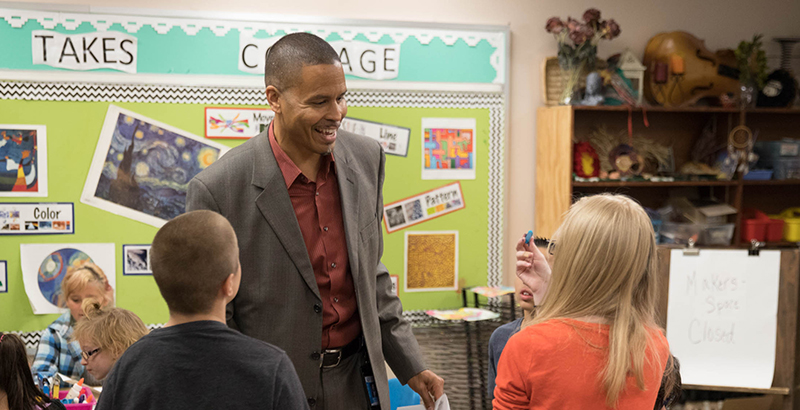
The 74 Interview: Colorado Springs Superintendent Michael Thomas on Being a Black Leader Working to Change a White System
Equity: When Colorado Springs School District 11 appointed Michael Thomas as its new superintendent, school board members gave him two big tasks. He needed to make the district — the increasingly diverse center of an affluent city — more culturally affirming for families. And he had to stop a decade-plus exodus of 700 to 1,000 students a year. A Black man who came up in predominantly white schools and then went on to work in them, Thomas firmly believes that if you take care of the first task and make schools welcoming and relevant, families will stay. As tall an order as that is, the first thing Thomas had to do was to convince the adults in the system that there was a problem. In an interview for The 74’s recent series on the ways in which COVID’s inequities are showing up in schools, Thomas talked to Beth Hawkins about continuing to push hard changes even in a pandemic, recalling his own George Floyd moment and persisting as a Black leader without “committing cultural sacrifice.”
—Special Report: After a K-shaped recession, a classroom crisis?

When Graduating Isn’t Enough: New KIPP Scholarship Will Help First-Gen College Grads At Risk of Being ‘Underemployed’
Social Capital: Closing the opportunity gap for low-income, first-generation college students is a moving target. Author and 74 contributor Richard Whitmire has been writing about the evolution for years — from the initial push to get these students into college, which morphed into getting them through college and is now focused on securing appropriate post-college career paths. To that end, the KIPP charter school network announced the Ruth and Norman Rales Scholars Program, which will provide four years of mentoring, summer internship assistance, financial literacy training, networking advice and funding to defray college costs. The supports are valued at $60,000 per student, and the grant covers 50 students a year, up to 250 students over five years. Whitmire rounds up what some of the nation’s other big charter networks are doing to help launch alumni careers. Read the full report.
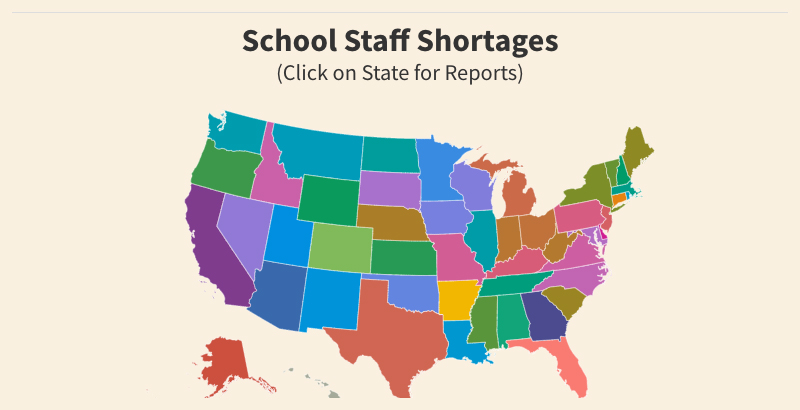
The Great Shortage: Explore How Districts in All 50 States Are Grappling With Missing Teachers, Nurses, Cooks, Bus Drivers & Other Essential Workers
Interactive Map: A month into the academic year, schools in all 50 states are experiencing staff shortages, The 74 has found. The latest data from the Bureau of Labor Statistics show there were 460,000 state and local education job openings in July, and schools report that they need more cafeteria and afterschool workers, school safety agents, custodians and nurses. Across the country, schools have asked parents to provide transportation to school for their children and ordered in pizzas when there were no cafeteria workers to make lunch. A bus driver shortage described as “severe” pushed one Minnesota superintendent to get her bus driver’s license, while a Nebraska district canceled class for a “rest and reset” day due to shortages, burnout and illness. “I fear the worst is yet to come,” said Superintendent Susan Enfield of the Highline Public Schools, outside Seattle, where central office staff are filling teaching positions. Scan through a sampling of the staffing shortages districts are currently experiencing nationwide in a new interactive map, compiled by The 74’s Meghan Gallagher.
Go Deeper: Get essential education news and commentary delivered straight to your inbox. Sign up here for The 74’s daily newsletter.
Help fund stories like this. Donate now!

;)